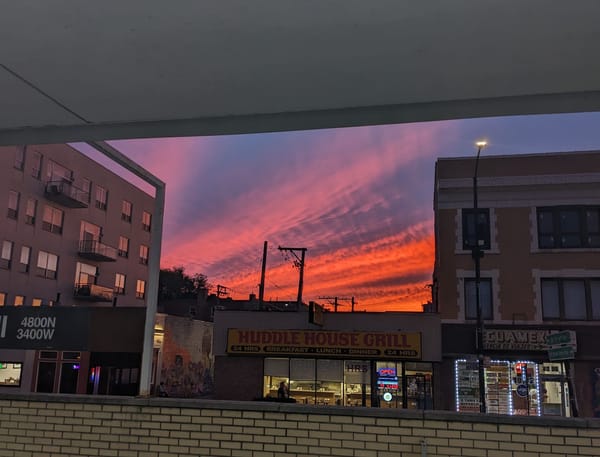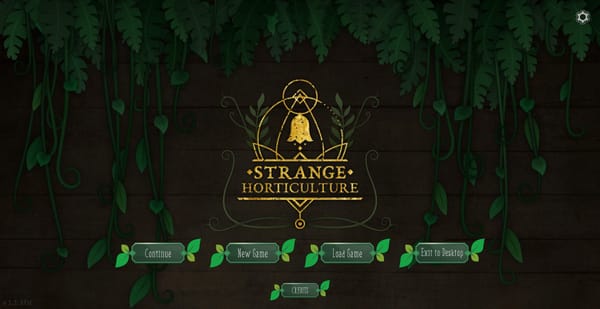A Curious House Ends
My house was built of sentences.
Originally sent via Tinyletter on June 29th, 2023
In October 2021, I started a Twitter bot project called A Curious House which has now come to an end. The Curious House is over because Elon Musk purchased Twitter and swiftly moved to make it much worse than it already was. Access to Twitter’s API is no longer free, so the service I was using to run the bot, Cheap Bots Done Quick, shut down once that took proper effect. Originally, this end was meant to happen abruptly on February 9th, 2023, but public outcry and Twitter’s well-documented internal turmoil seems to have delayed it a bit. It’s really over now, though – the house’s last dispatch went out on March 28th. (The developer, V Buckenham, has made a clone of their bot-maker for Mastodon, but I’m not sure yet if I’ll be making the move there.)
This project was made as a midterm for a class I took called Poetic Systems, taught by Judd Morrissey, during the first year of my MFA. The class introduced me to a few digital methods of expression, including AR and VR systems, which I was then encouraged to incorporate into my own work. This midterm assignment started with augmented reality, but I was drawing on something I’d encountered on my own outside of class – Twitter bots that tell you a story.
As a kid I enjoyed Choose Your Own Adventure books, narratives which present the reader with forks in the road. If you want the main characters to go through one door instead of another, you’re told to turn to the right page to continue through that door, and you eventually reach an “end” of the story by following the page instructions. The visual novels and heavily narrative video games I enjoy now follow similar principles, but the choices you make automatically turn the pages for you.
The Twitter bots I liked were similar in spirit, but they were more passive. They meandered. For instance, the Strange Voyage bot by Joe Baxter-Webb tweeted out what unnamed mariners see on a journey in unfamiliar and fantastical seas. The perspective of the Strange Voyage account was first-person plural, using “we” and “our.” You could read this either as a speaker telling you about their voyage, or you could read it as you having a stake in this game, also voyaging forever on this boat. Regardless, you had no choice in where the boat went. The tweets were created behind the scenes and sent out automatically; the only option you had was to follow or not. Due to the nature of Twitter’s feed, you may not have even encountered them in the order they were posted. But because they were randomly generated, it didn't matter the order you encountered them anyway. The form mimicked the bot’s subject; you were at the mercy of the feed’s winds and waves.
The serendipity of the feed is something I wanted to harness when it came to my own bot. I decided to make mine a voyage of its own kind – an exploration of a strange house. What then became A Curious House was inspired by these other feeds, but in particular my fascinations with strange architectures, real and imaginary. I return often to Sir John Soane’s Museum and the Museum of Jurassic Technology as touchstones. I’ve been thinking much about Susanna Clarke’s Piranesi since it came out. House of Many Ways by Diana Wynne Jones and of course House of Leaves by Mark Z. Danielewski are also cornerstones for me in this niche genre. These works and real-life places have in common a feeling of an exterior which belies the size of its interior, as well as surprises – some unsettling – around every corner.

My house was built of sentences. The subject of the sentence, “you,” was the reader/follower. In each sentence, you encountered a window, a hallway, a staircase, a door, a room, or something else within the house. These structures were sometimes given an adjective, and sometimes not. Sometimes the room was given another attribute; sometimes the material of the window or door was described; sometimes you heard something coming from up the staircase. Sometimes, you saw something through a window.
Sometimes, you encountered the “other.” The other thing could have been a feeling – that you were hungry, that you were tired, that you were thinking. Sometimes, the other thing was a link which, if clicked, would’ve shown you one of the described structures super-imposed over our own world. This was done through a bit of augmented-reality code which I implemented much more lightly than I would’ve wanted. When you clicked the link while on a mobile phone, the intended effect was that a door or window would float in front of you in a place where there should not have been a door. Encountered organically in the feed as it would have been while you were scrolling on your phone out in the world, I wanted this to enhance the mysterious and exploratory feeling of the journey. I also thought of the doors in Monsters, Inc. or the archway at the end of Prince Caspian that leads back to England. Portals from one reality to another, though they weren’t set in any visible barrier between those realities.
For my final project in this class, I had to consider what the next step might be for A Curious House. The house was mostly empty of life, frozen in some antiquated time, and there were hints of decay in its very nature. After some of my classmates’ observations in that vein, I decided to use another digital technique to further its decay. In this case, “decay” meant taking a collection of my own automatically generated sentences, mixing them all up, and regenerating them just a bit wrong. I used a library called RiTA for Markov-chain-based text generation and fed it an archive of all the tweets from the account thus far at that time. In RiTa, there’s essentially a dial you can turn up or down for the accuracy of its output. I could’ve had it generate sentences pretty much exactly like the ones that the feed autopopulated, but I didn’t want them to be right. The house was built of words, and in order to show the house decaying, I had to make these sentences fall apart a little. I set the dial somewhere in the middle – the sentences wouldn’t be complete nonsense, but they wouldn’t feel right either.
I set up a separate site where the decaying Curious House would live. It still displays the new sentences if you, the reader, decide to click the button to “continue on.” There’s a button to return to the original Twitter feed, and a button that says the house will reach its final form eventually. There is also an image, randomly selected from an archive I gave my site, of something from the house. I found the combinations randomly generated by the decaying sentences and chosen images sometimes funny, or soothing, or eerie.
I haven’t decided what the true final form of the house will be. It might just be a bathroom, which you’ll never find in the original house, but which according to the sentences you sought. Either way, phase one of the project as we know it is essentially over, because Elon Musk bought Twitter and has decided to break everything.
A Curious House is technically still in existence at the time being, but I don’t know how long it will be until it decays completely. If you’ve enjoyed the project in any way, I’m very grateful for that. If you’re just taking a look at it now, please stay a while. The past is open and available to you. The future is closed to you only for now.
Miscellany:
- Last year I also read The Poetics of Space by Gaston Bachelard and have thought a lot about it since.
- I’m listening a lot to “Birthmark” by Dizzy, might’ve run it into the ground by now.
- Tears of the Kingdom TEARS OF THE KINGDOM more on this in the next post, of course.
- A couple of other Twitter bots I enjoyed were the Autoflaneur and Kathleen Jennings's delightfully gothic Girls Running From Houses (the latter is still posting through a different service than CBDQ).
- I don't know if it matters to anybody but the photo I used for the profile picture of the Curious House is in the Southport neighborhood of Chicago, very near the Music Box.



